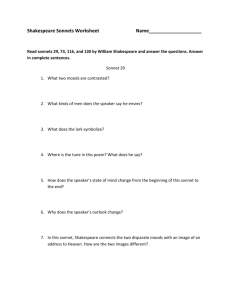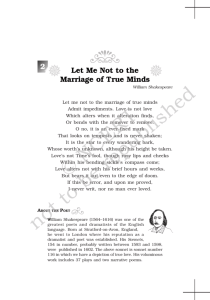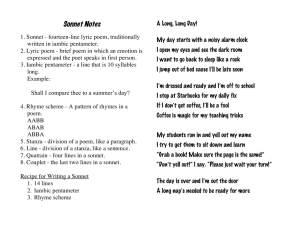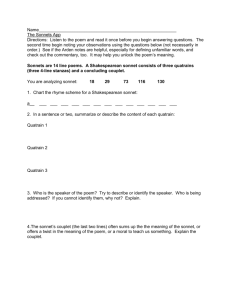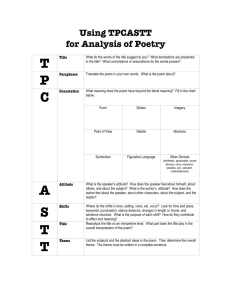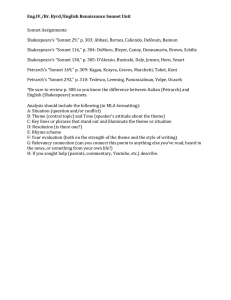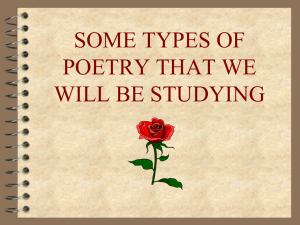Study Guide to Whoso List to Hunt
advertisement
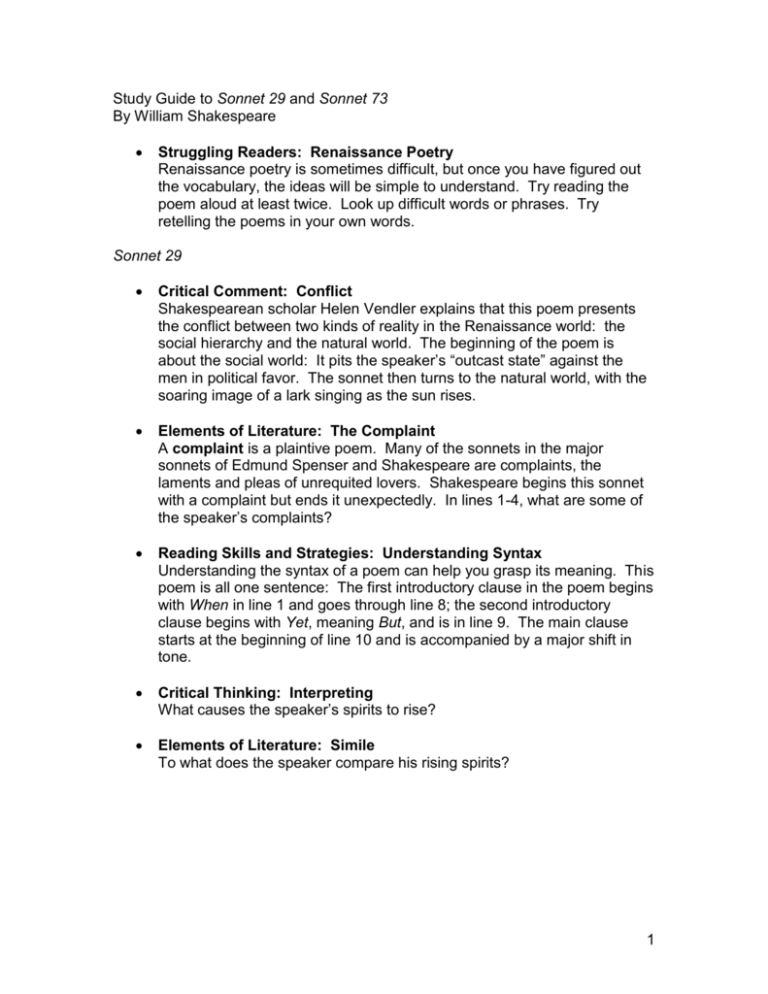
Study Guide to Sonnet 29 and Sonnet 73 By William Shakespeare Struggling Readers: Renaissance Poetry Renaissance poetry is sometimes difficult, but once you have figured out the vocabulary, the ideas will be simple to understand. Try reading the poem aloud at least twice. Look up difficult words or phrases. Try retelling the poems in your own words. Sonnet 29 Critical Comment: Conflict Shakespearean scholar Helen Vendler explains that this poem presents the conflict between two kinds of reality in the Renaissance world: the social hierarchy and the natural world. The beginning of the poem is about the social world: It pits the speaker’s “outcast state” against the men in political favor. The sonnet then turns to the natural world, with the soaring image of a lark singing as the sun rises. Elements of Literature: The Complaint A complaint is a plaintive poem. Many of the sonnets in the major sonnets of Edmund Spenser and Shakespeare are complaints, the laments and pleas of unrequited lovers. Shakespeare begins this sonnet with a complaint but ends it unexpectedly. In lines 1-4, what are some of the speaker’s complaints? Reading Skills and Strategies: Understanding Syntax Understanding the syntax of a poem can help you grasp its meaning. This poem is all one sentence: The first introductory clause in the poem begins with When in line 1 and goes through line 8; the second introductory clause begins with Yet, meaning But, and is in line 9. The main clause starts at the beginning of line 10 and is accompanied by a major shift in tone. Critical Thinking: Interpreting What causes the speaker’s spirits to rise? Elements of Literature: Simile To what does the speaker compare his rising spirits? 1 Sonnet 73 Critical Comment: Metaphor Literary scholar Helen Vendler says this sonnet contains three models of life: a season, a day, and a fire. A season and a day fade, but a fire burns, providing a glow. So, too, the love the speaker invokes in the final couplet does not fade but glows and grows stronger as the end approaches. Elements of Literature: Poetic Meter The meter of this poem is Shakespeare’s characteristic iambic pentameter. Elements of Literature: Parallel Structure What parallel structure introduces each of the three metaphors? What effect does this parallelism have on the poem? Critical Thinking: Interpreting How does the speaker’s advancing age affect his beloved? Connecting to the Theme: “Love, Death, and Time” List the images that suggest the passage of time. How do these images show the passage of life to death? Locate the turn. How does the turn also suggest death? How does the turn suggest the passing of time? How does the turn praise love? 2

